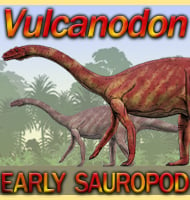In Depth
Changyuraptor is another of an increasing number of dromaeosaurid dinosaurs that have been dubbed ‘four-winged dromaeosaurs’. This is because Changyuraptor did not just have well developed pennaceous feathers on the arms; they also grew from the back of the legs. The first of these dromaeosaurs to be described was Microraptor which is speculated to have used its wings to glide for short distances. However, Changyuraptor is both a little bit longer and much more heavily built than Microraptor, casting serious doubts that Changyuraptor would have been capable of even gliding flight. Changyuraptor however would have still been a fast and nimble predator, easily capable of chasing down everything from small lizards to perhaps even smaller dinosaurs.
When Changyuraptor was first described in 2014 it was heralded as the largest ‘four-winged dromaeosaur’ known, being a little bit longer, but significantly more heavily built than earlier described forms. However just one year later a new genus called Zhenyuanlong was named and this threatens to take away the title from Changyuraptor. Feather impressions of Zhenyuanlong are only known from the forward portion of the body and the arms. No feathers are known of the legs, but there is every possibility that this may just be a result of the feathers decaying before they were preserved. If Zhenyuanlong was another four-winged dromaeosaur then it would take the title from Changyuraptor given that the holotype individual of Zhenyuanlong is easily larger in both length and body weight than the holotype individual of Changyuraptor.
Further Reading
- A new raptorial dinosaur with exceptionally long feathering provides insights into dromaeosaurid flight performance. - Nature Communications 5(4382):1-9. - G. Han, L. M. Chiappe, S. Ji, M. Habib, A. H. Turner, A. Chinsamy & L. Han - 2014.










